As technology advances, new types of players, new systems, better data and new tools and channels are emerging across the insurance value chain. This brings unprecedented prospects for better serving people’s insurance needs, and, in so doing, making insurance an engine of growth and development in Africa. Making the most of these opportunities requires collaboration and cooperation between market players and regulators to build an ecosystem in which responsible innovation can thrive. It also requires regulators to strike a balancing act between facilitating innovation and ensuring consumer protection.
But how to do so? Answering these questions first requires an appreciation of the state of innovation, the gaps and the barriers to innovation in the local country context. It also requires regulators to be aware of the range of tools at their disposal to address these gaps.These tools go beyond just regulation to also consider supervisory processes and systems and, importantly, engagement with the market. On this basis, a regulating for innovation action plan can then be developed.
FSD Africa’s Risk, Resilience, and Regulatory Lab – R3Lab, in short -works to create an enabling regulatory environment for innovation by
encouraging and facilitating regulatory and supervisory interactions between insurance regulators in Africa.
As part of the initial work of the R3Lab, we assessed the state of innovation in eight countries in Sub-Saharan Africa (SSA), took stock of the barriers to further innovation, and suggested tailored innovation promotion action plan recommendations for each country – in the form of a series of insurance innovation country portraits and synthesis note. We are now working with supervisors in these countries to take their action plans forward.
Drawing on the lessons learned and extensive engagements with supervisors across these and other countries, this toolkit (1)
documents the steps and learnings for regulators to conduct an innovation gap assessment, (2) provides a taxonomy of the tools through which they can enable innovation, (3) provides a practical guide for how to select and combine tools into concrete activities as part of an innovation action plan, and (4) sets out a key performance indicators (KPI) framework to effectively track progress of the innovation action plan.
The core approach is outlined in an infographic here.




